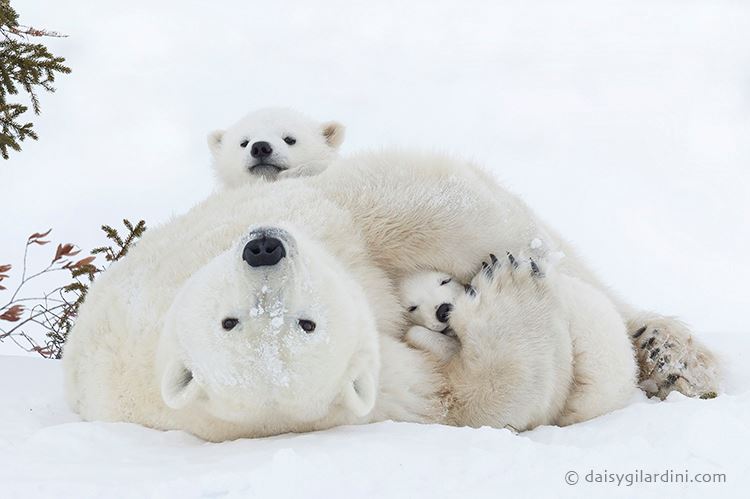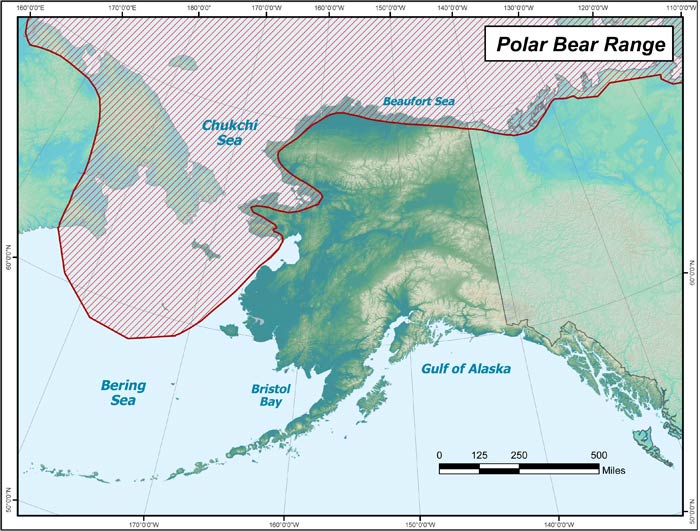by Steve Selden | May 5, 2017 | Conservation

Polar bear habitat protection is becoming a hot issue. Daisy Gilardini photo.
The U.S. Supreme Court stood up against a coalition of organizations within Alaska by declining to hear a case on Monday which attempts to repeal the previous federal government administration’s policy to designate more than 187,000 square miles of Alaskan wilderness as critical habitat for threatened polar bears.
Lawsuits filed against the Interior Department by the Alaska Oil and Gas Association and the state of Alaska along with Native corporations and local governments were able to reverse the regulation in 2013 though the 9th Circuit Court of Appeals reversed that ruling.The state of Alaska and the Alaska Oil and Gas Association — joined by Native corporations and local governments — brought lawsuits against the Interior Department to overturn that decision.
However, the U.S. Supreme Court decided against hearing the case and therefore the ruling reverted back to the original law which was instituted by the U.S. Fish and Wildlife Service. The area in Alaska’s Arctic was protected by the federal government in December 2010.

Alska polar bear habitat. State of Alaska photo.
Opposition groups filing appeals against the original designation claimed that the Fish and Wildlife Service overstepped its authority and created major economical consequences with relatively no conservation benefit whatsoever. The argument presented to the Supreme court attempted to overturn the decision by the 9th U.S. Circuit Court of Appeals which left Fish and Wildlife open to make “sweeping designations (in this case an area the size of California) that overlap with existing human development (including, even, industrial areas).” further arguing that the designated polar bear habitat interfered with oil industry operations as well as tribal sovereignty.

Mother polar bears avoid having their cubs swim in the ocean until they have the fat reserves to protect them. Jonathan Hayward photo.
“Swept within that enormous block of land are the entire ancestral homelands for certain Native communities, as well as the largest and most productive oil field in North America,” the petition to the oil and gas group gave the Supreme Court. Nearly 96 percent of the protected habitat area is sea ice, the smaller, remaining area includes “industrial facilities, garbage dumps, airports, communities, and homes (from which bears are actively chased away) as ‘critical’ habitat that is purportedly free from ‘human disturbance’ or otherwise ‘unobstructed,’ ” the petition said.
The coalition of various groups argued further that the 9th Circuit Court’s broad ruling would allow for expansion of habitat designations in other regions of the United States.
The government stated that it utilized two rounds of public comment and current, leading scientific data in defense of why the protected habitat was designated by courts initially.
“The Service did not designate any areas outside the geographical area currently occupied by polar bears because it determined that ‘occupied areas are sufficient for the conservation of polar bears in the United States,’ ” the federal government reported to the Supreme Court.
by Steve Selden | Mar 25, 2016 | Conservation
A retired RCMP, recently convicted and sentenced of illegally smuggling narwhal tusks into the United States from Canada, has been extradited to the U.S. on related money-laundering charges in Maine. A New Jersey man, Andrew Zarauskas has also was convicted in 2014 and is currently serving time in prison. Jay Conrad from Tennessee awaits trial.
Gregory Logan, 58, of Woodmans Point, N.B., is being held in custody pending his trial date of May 3 in U.S. District Court in Bangor, Maine
Charges include smuggling of 250 narwhal tusks with a value of over two million US dollars into the United States by concealing them in false compartments in his vehicle. Prosecution asserts that Logan had been transporting tusks across the border since 2000 when he was still employed by the RCMP. He allegedly brokered the tusks to private collectors and then transferred the funds outside the US.

Narwhal tusks that were evidence in the trial of Andrew J. Zarauskas. Linda Coan O’Kresik | BDN photo.
Logan, whom was fined $385,000 and four months house arrest under an eight month conditional sentence, faces up to 20 years in prison and fines of up to $500,000 US with the money laundering charges in the states.
“As this case shows, wildlife trafficking can involve millions in illegal transactions, compounding the damage it does to the wealth and diversity of life on our planet,” Assistant Attorney General John Cruden, of the Justice Department’s environment and natural resource’s division, said in a statement. By pursuing the criminal financial transactions that flow from trafficking, we are making [it] a less attractive and more costly enterprise.”
Narwhals live year-round in the Arctic and are a protected species under the Convention on International Trade in Endangered Species of Wild Fauna and Flora (CITES).
Law prohibits importing narwhals, or any of their parts, into the United States, barring a special permit, under the Marine Mammal protection Act. Spiraled tusks, found predominately in males are actually a tooth protruding through the upper jaw, reach up to ten feet and can fetch nearly $100 an inch on the black market.
Co – conspirators Andrew Zarauskas, of Union, New Jersey,has already been convicted and sentenced to nearly three years in prison while Jay Conrad, of Lakeland, Tennessee, has plead guilty and awaits sentencing.

Andrew J. Zarauskas of Union, N.J. (left) was convicted of smuggling narwhal tusks into the US from Canada. Gabor Degre | BDN photo.
Evidence at trial showed Zarauskas, 61, doubled his money on the $85,000 he paid Logan between 2002 and 2008 for approximately 33 tusks. What was particularly egregious about Zarauskas’ case was that he was working as a confidential informer for the U. S. Fish and Wildlife Service in a separate case that did not involve narwhal tusk smuggling.
by Steve Selden | Sep 8, 2015 | Conservation
Biologists from the U. S. Fish and Wildlife Service and U. S. Geological Survey teamed with Local residents from Kaktovik, a remote island in the Beaufort Sea, to rescue a polar bear ensnared in a lost fishing net. The 1,000 pound male polar bear was spotted in the sea struggling due to the netting wrapped around his body. Biologists flew close to the bear and shot him with a tranquilizer dart. Local fishermen, nearby in their boats, rushed in to buoy the bear to prevent him from drowning while sedated.

A polar bear that was trapped in a fishing net rests on shore after being freed. U S geological Survey photo.
Biologists worked feverishly to untangle the bear and he was released back into the wild after they deemed him injury free.
USGS asserts that climate change continues to affect polar bear habitats and they have established a Polar Bear Recovery Team to protect them. While individual rescues such as this aide in saving small numbers of polar bears, each one, especially females, can be crucial to the populations overall strength. close contact with sedated bears can also reveal scientific information to help evaluate the species.

Polar bear resting after sedation and removal of fishing net. U. S. geological Survey photo.









